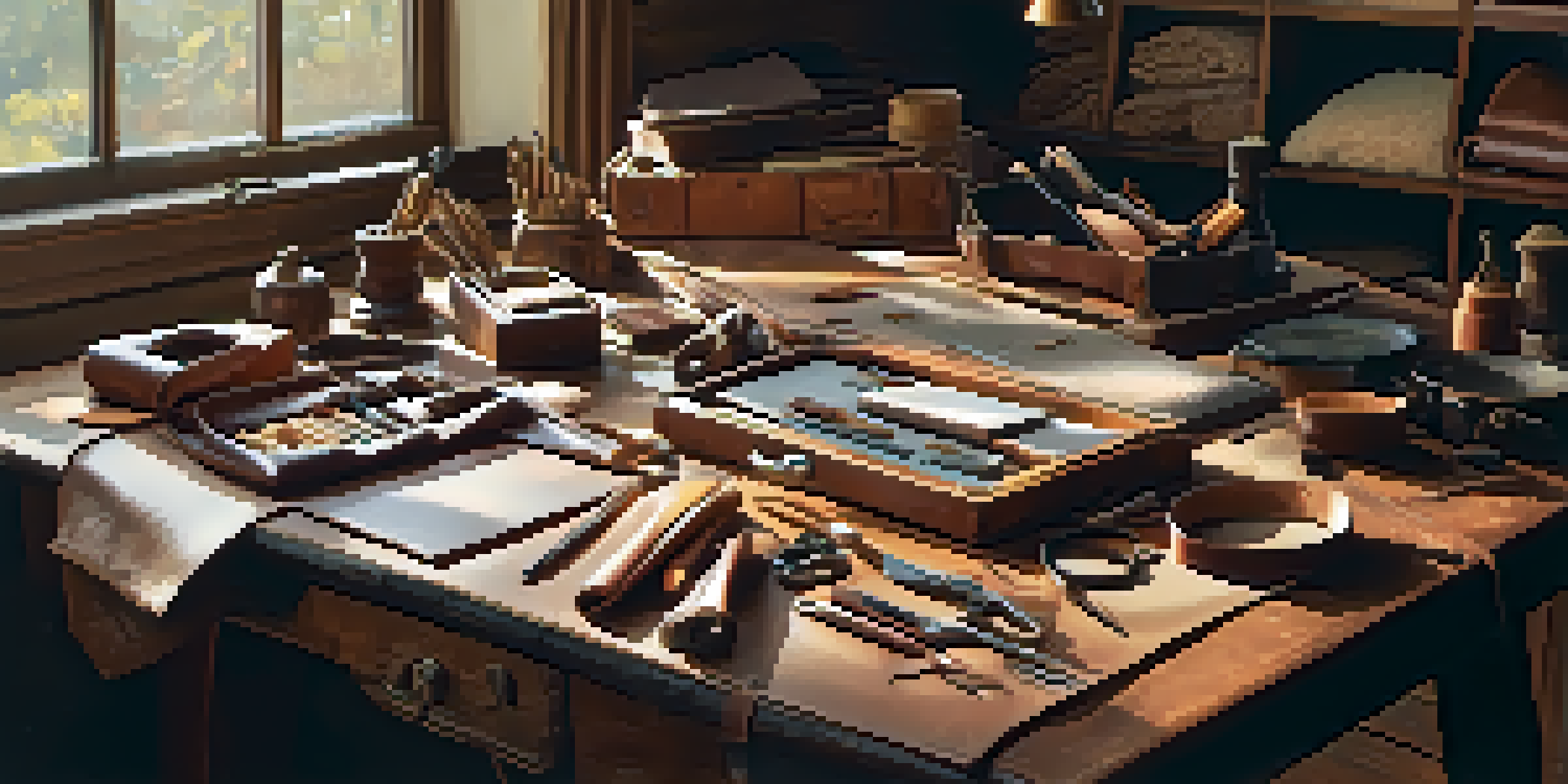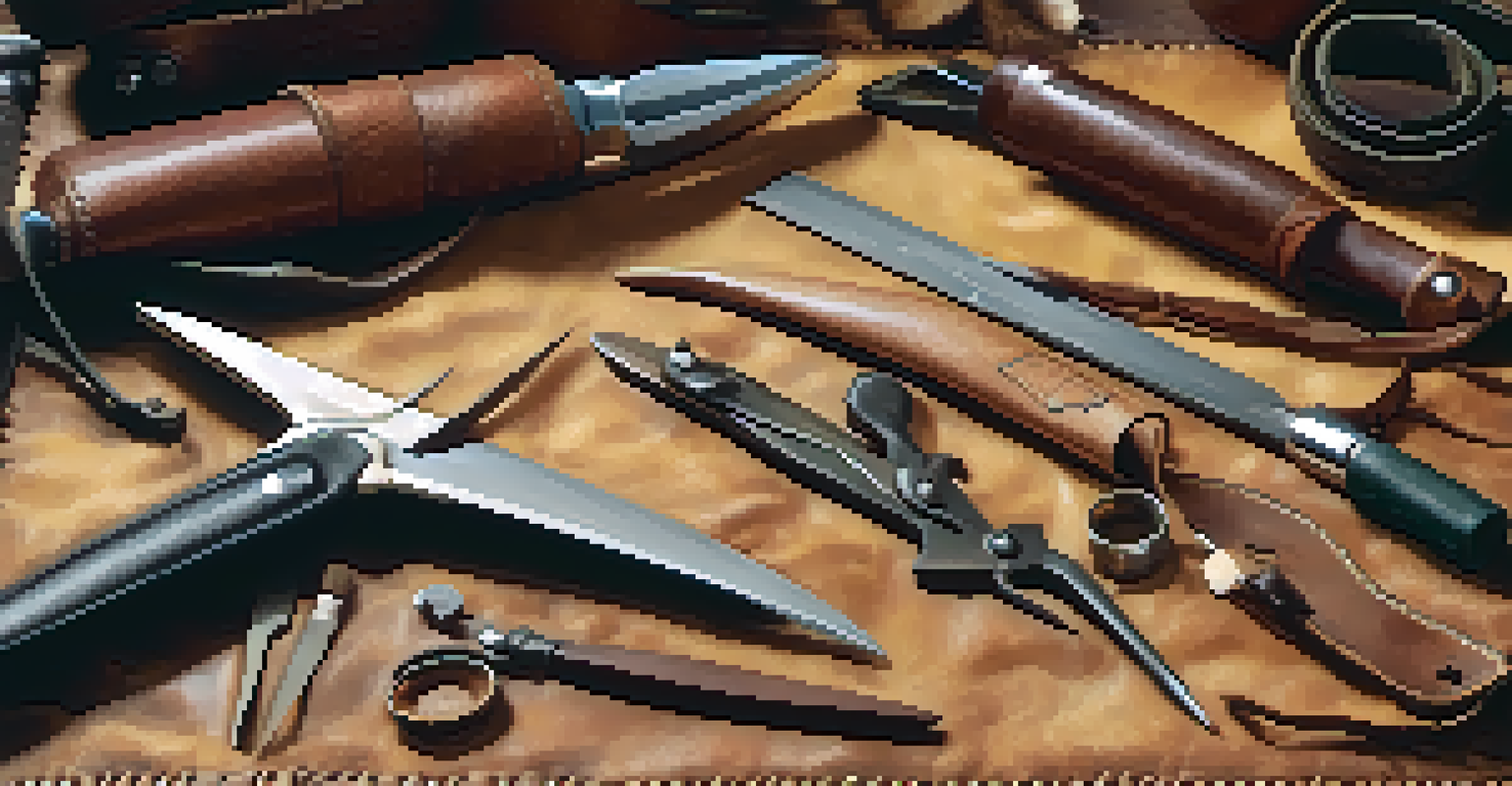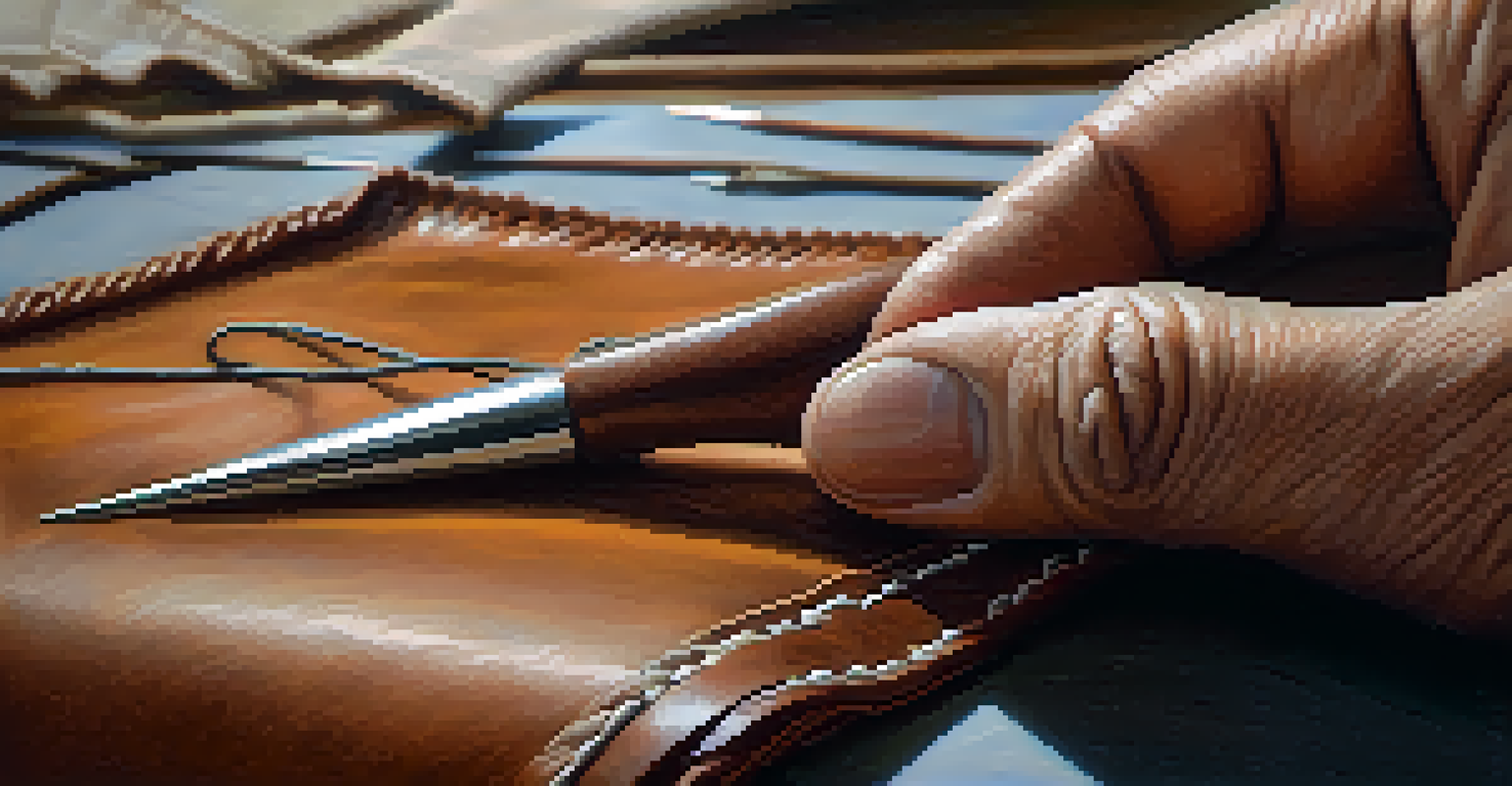Essential Tools for Leather Crafting: A Beginner's Guide

Understanding the Basics of Leather Crafting Tools
Before diving into leather crafting, it’s important to familiarize yourself with essential tools. These tools not only aid in the crafting process but also enhance your overall experience. From cutting to stitching, each tool has a specific purpose that contributes to the final product.
The secret to success is to be ready when your opportunity comes.
A good starting point is understanding the types of leather you’ll be working with. Different kinds of leather, such as vegetable-tanned or chrome-tanned, may require different techniques or tools. This foundational knowledge will help you choose the right tools suited to your projects.
As you explore the world of leather crafting, remember that choosing quality tools can make a significant difference. Investing in reliable tools will not only improve your craftsmanship but also save you time and frustration down the line.
The Essential Cutting Tools for Leather Work
Cutting tools are the backbone of any leather crafting project. A sharp utility knife or rotary cutter is essential for making precise cuts without damaging the leather. Having a cutting mat underneath ensures that you protect your work surface while achieving accuracy.

In addition to knives, consider adding a set of leather shears to your toolkit. These are specifically designed to handle thicker materials and can provide cleaner edges compared to regular scissors. The right cutting tools will help you create shapes and designs that are integral to your projects.
Essential Tools for Leather Crafting
Familiarizing yourself with the right tools, such as cutting, stitching, and finishing tools, is crucial for successful leather crafting.
Don't forget about rulers and templates, which can greatly enhance the precision of your cuts. Using these tools not only improves your measurements but also allows for consistency across multiple pieces. When it comes to leather crafting, precision is key!
Stitching Tools: The Heart of Leather Crafting
Stitching is what truly holds your leather pieces together, making stitching tools crucial. An awl is a must-have for marking and creating holes for your stitches, ensuring they’re evenly spaced and aligned. This simple tool can dramatically affect the final look of your project.
Quality is not an act, it is a habit.
For actual stitching, consider using leather needles and waxed thread. Leather needles are designed with a rounded tip that easily penetrates thick materials. Waxed thread is not only durable but also helps prevent fraying, resulting in longer-lasting seams.
Finally, a stitching pony or clamp can provide the stability you need while sewing. This tool holds your leather in place, allowing you to focus on creating consistent stitches without the hassle of holding everything together.
Tools for Finishing and Edging Your Leather Projects
Finishing and edging tools are essential for giving your leather projects that polished look. Edge tools like edge bevelers and burnishers help smooth out and round the edges of your pieces, creating a more professional appearance. This is especially important for items like wallets and bags, where edges are visible.
Dyes and finishes also play a vital role in the final aesthetic of your project. Using leather dye can enhance the color and character of your leather, while finishes can add protection against wear and tear. Experimenting with different finishes can lead to unique and personalized creations.
Organizing Your Workspace Matters
A well-organized and tidy workspace enhances your crafting experience and boosts creativity by making tools easily accessible.
Don’t underestimate the importance of quality sandpaper or a sanding block for smoothing rough edges. A little sanding can go a long way in elevating the overall look of your finished piece, making it both attractive and functional.
Cutting and Shaping: Tools for Design Precision
Cutting isn’t just about straight lines; sometimes you need to shape your leather into specific designs. A set of craft knives or specialty blades can help you achieve intricate patterns and curves. These tools allow for more creativity, letting your imagination run wild.
Templates can also be a game-changer when it comes to complex designs. Whether you’re making a bag or a wallet, templates help ensure each piece is cut consistently. This is especially helpful for beginners who may not yet feel confident in freehand cutting.
Additionally, using a metal ruler will help you achieve straight cuts while protecting your fingers. The combination of these tools can make your design process smoother and more enjoyable, leading to impressive results.
Essential Tools for Punching and Setting Hardware
When it comes to adding hardware to your leather projects, punching tools are indispensable. A set of leather hole punches allows you to create clean holes for rivets, snaps, or buckles. This ensures that your hardware is securely attached and functions properly.
Also, consider investing in a rivet setter for those sturdy metal attachments. This tool makes it easy to secure rivets without damaging your leather. The right hardware can not only enhance functionality but also add a decorative touch to your creations.
Learning Resources for Beginners
Utilizing online tutorials, community support, and books can significantly aid beginners in mastering leather crafting techniques.
Don’t overlook the importance of a good mallet as well. A rawhide mallet is perfect for striking your punches and setters without causing damage. This simple tool can make a world of difference in achieving clean and professional results.
Organizing Your Leather Crafting Workspace
Having a well-organized workspace can significantly improve your leather crafting experience. Consider investing in storage solutions such as toolboxes or drawer organizers to keep your tools easily accessible. This saves you time and frustration when you're in the middle of a project.
Labeling your tools and materials can also help streamline your workflow. Knowing exactly where everything is located allows you to focus on creativity rather than searching for misplaced items. A tidy workspace can also inspire a sense of calm and focus.

Lastly, don’t forget about proper lighting. Good lighting can reduce eye strain and help you see details more clearly, which is crucial for intricate work. A well-organized and well-lit space can set the stage for successful leather crafting.
Learning and Growing: Resources for Leather Crafters
As a beginner, the journey of leather crafting can be both exciting and overwhelming. Fortunately, there are numerous resources available to help you learn and grow. Online tutorials, videos, and blogs can provide valuable insights and step-by-step guidance.
Joining local or online leather crafting communities can also enhance your learning experience. These groups offer support, feedback, and inspiration from fellow crafters. Sharing your progress and challenges can lead to valuable tips and tricks that improve your skills.
Lastly, don't hesitate to invest in books or courses dedicated to leather crafting. These resources can provide deeper knowledge about techniques, tools, and design principles. With the right resources at your fingertips, you’ll be well on your way to becoming a skilled leather crafter.